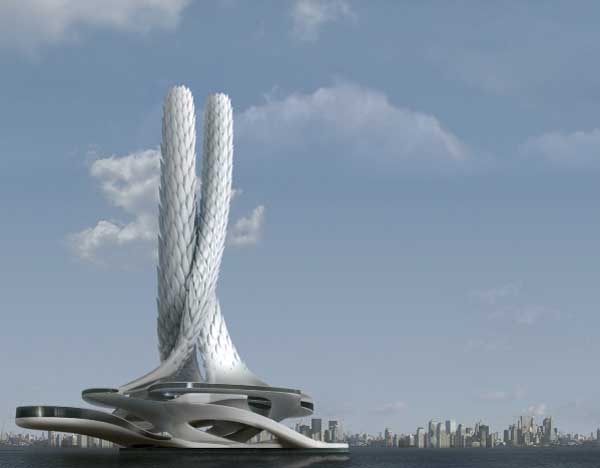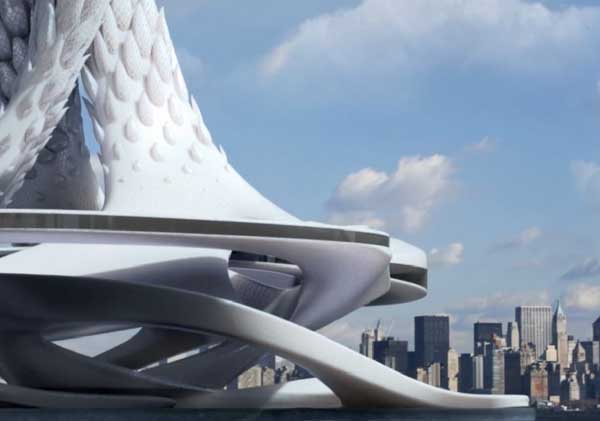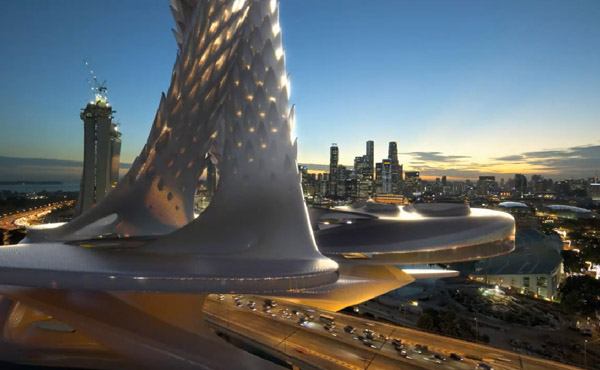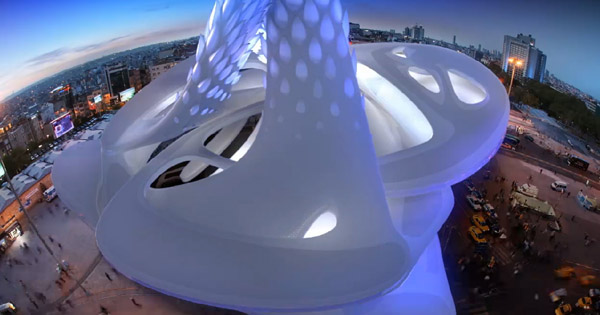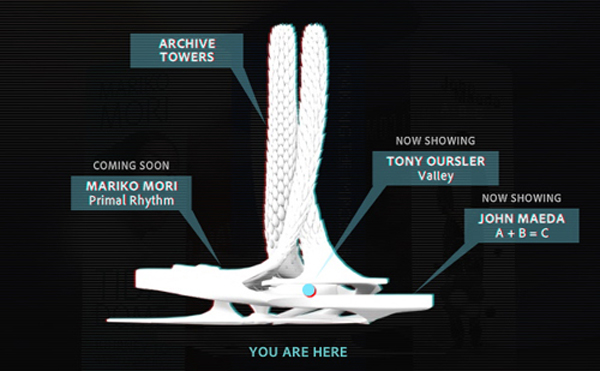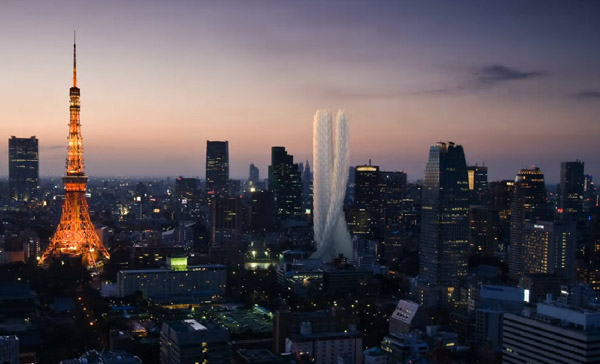Filippo Innocenti, co-founder of the UK-based architecture firm Spin+ and an associate architect at Zaha Hadid Architects, was selected by Adobe for the design of an entirely digital museum. Adobe wanted more than a website designer; they were looking for a way to make the space feel “physical’. While Innocenti designed the Museum as a real architectural project, the website design was left to the London-based digital production company Unit9.
The Adobe Museum of Digital Media was designed without concerns such as technical constrains, budget, or natural forces. Innocenti collaborated closely with award-winning designer Piero Frescobaldi, who served as the “building contractor” for construction of the virtual space. Initial design ideas, revolving around spaces devoid of gravity, were too far from the real feel of a building. However, the final design is far from conventional. In real life, the Museum would span over 620, 000 square feet. The visitor first encounters a podium structure resembling a nest of swirled ribbons, which holds the main exhibition spaces and an auditorium for web meetings. The open atrium is home to the exhibitions, which will include works that examine broadcast communications and product development in addition to art. A fluidly shaped set of towers house the archives rise from the base. The entire museum is reconfigurable, so galleries can be adapted to each artist’s vision, and the archives can grow.

